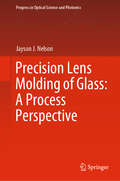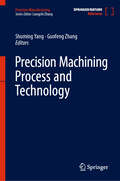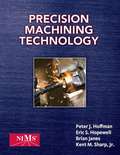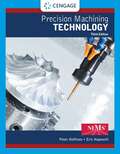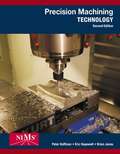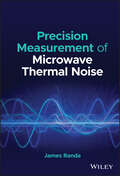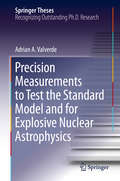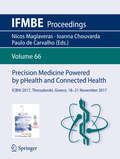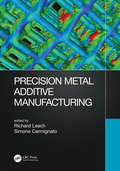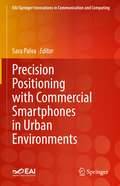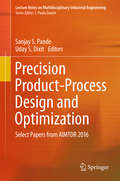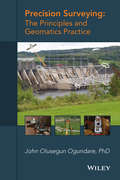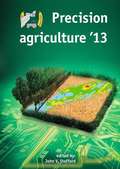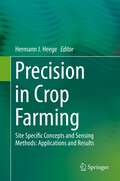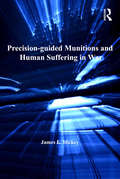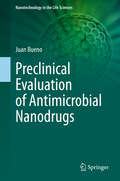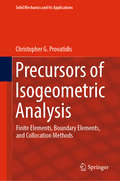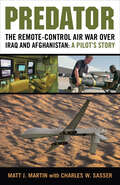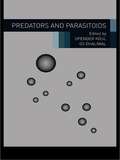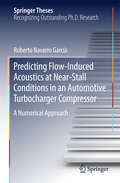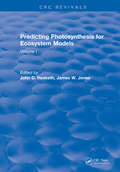- Table View
- List View
Precision Lens Molding of Glass: A Process Perspective (Progress in Optical Science and Photonics #8)
by Jayson J. NelsonThis book highlights the tools and processes used to produce high-quality glass molded optics using commercially available equipment. Combining scientific data with easy-to-understand explanations of specific molding issues and general industry information based on firsthand studies and experimentation, it provides useful formulas for readers involved in developing develop in-house molding capabilities, or those who supply molded glass optics. Many of the techniques described are based on insights gained from industry and research over the past 50 years, and can easily be applied by anyone familiar with glass molding or optics manufacturing. There is an abundance of information from around the globe, but knowledge comes from the application of information, and there is no knowledge without experience. This book provides readers with information, to allow them to gain knowledge and achieve success in their glass molding endeavors.
Precision Machining Process and Technology (Precision Manufacturing)
by Guofeng Zhang Shuming YangThe aim of this handbook is to provide a comprehensive summary of integrated machining processes and technology for precision manufacturing of large-size and small-size components. It presents state-of-the-art of precision machining processes such as precision and single point diamond turning; precision milling, grinding and lapping/polishing, control and sensing technology; precision machining of ductile and brittle materials, measurement technology and integration of the machining processes for precision manufacturing. The information provided in the book will be of interest to industrial practitioners and researchers in the field of precision machining processes and technology. This volume is part of a multi-volume handbook series that covers a comprehensive range of scientific and technological matters in &‘Precision Manufacturing&’, for more information please view this link- https://www.springer.com/series/15575.
Precision Machining Technology
by Peter J. Hoffman Eric S. Hopewell Brian Janes Kent M. SharpPRECISION MACHINING TECHNOLOGY has been carefully written to align with the National Institute of Metalworking Skills (NIMS) Machining Level I Standard and to support achievement of NIMS credentials. This new text carries NIMS' exclusive endorsement and recommendation for use in NIMS-accredited Machining Level I Programs. It's the ideal way to introduce students to the excitement of today's machine tool industry and provide a solid understanding of fundamental and intermediate machining skills needed for successful 21st Century careers. With an emphasis on safety throughout, PRECISION MACHINING TECHNOLOGY offers a fresh view of the role of modern machining in today's economic environment. The text covers such topics as the basics of hand tools, job planning, benchwork, layout operations, drill press, milling and grinding processes, and CNC. The companion Workbook/Shop Manual contains helpful review material to ensure that readers have mastered key concepts and provides guided practice operations and projects on a wide range of machine tools that will enhance their NIMS credentialing success.
Precision Machining Technology
by Peter J. Hoffman; Eric S. Hopewell; Brian JanesThe Second Edition includes new coverage of cutting tools, teamwork, leadership, and more. The text continues to provide an emphasis on safety throughout and offers thorough coverage of such topics as the basics of hand tools, job planning, benchwork, layout operations, drill press, milling and grinding processes, and CNC. A companion Workbook/Shop Manual provides helpful review material to ensure readers have mastered key concepts while guided practice operations and projects on a wide range of machine tools will enhance their NIMS credentialing success.
Precision Measurement of Microwave Thermal Noise
by James RandaPrecision Measurement of Microwave Comprehensive resource covering the foundations and analysis of precision noise measurements with a detailed treatment of their uncertainties Precision Measurement of Microwave Thermal Noise presents the basics of precise measurements of thermal noise at microwave frequencies and guides readers through how to evaluate the uncertainties in such measurement. The focus is on measurement methods used at the U.S. National Institute of Standards and Technology (NIST), but the general principles and methods are useful in a wide range of applications. Readers will learn how to perform accurate microwave noise measurements using the respected author’s expertise of calculations to aid understanding of the challenges and solutions. The text covers the background required for the analysis of the measurements and the standards employed to calibrate radiofrequency and microwave radiometers. It also covers measurements of noise temperature (power) and the noise characteristics of amplifiers and transistors. In addition to the usual room-temperature two-port devices, cryogenic devices and multiport amplifiers are also discussed. Finally, the connection of these lab-based measurements to remote-sensing measurement (especially from space) is considered, and possible contributions of the lab-based measurements to remote-sensing applications are discussed. Specific topics and concepts covered in the text include: Noise-temperature standards, covering ambient standards, hot (oven) standards, cryogenic standards, and other standards and noise sources Amplifier noise, covering definition of noise parameters, measurement of noise parameters, uncertainty analysis for noise-parameter measurements, and simulations and strategies On-wafer noise measurements, covering on-wafer microwave formalism, noise temperature, on-wafer noise-parameter measurements, and uncertainties Multiport amplifiers, covering formalism and noise matrix, definition of noise figure for multiports, and degradation of signal-to-noise ratio Containing some introductory material, Precision Measurement of Microwave Thermal Noise is an invaluable resource on the subject for advanced students and all professionals working in (or entering) the field of microwave noise measurements, be it in a standards lab, a commercial lab, or academic research.
Precision Measurements to Test the Standard Model and for Explosive Nuclear Astrophysics (Springer Theses)
by Adrian A. ValverdeThis thesis presents two significant results in the field of precision measurements in low-energy nuclear physics. Firstly, it presents a precise half-life determination of 11C, leading to the most precise ft-value for a beta decay transition between mirror nuclides, an important advance in the testing of the electroweak sector of the Standard Model. Secondly, it describes a high-precision mass measurement of 56Cu, a critical nucleus for determining the path of the astrophysical rapid-proton capture process, performed by the author using the LEBIT Penning trap at the National Superconducting Cyclotron Laboratory. This new measurement resolves discrepancies in previously-reported calculated mass excesses. In addition, the thesis also presents the construction and testing of a radio-frequency quadrupole cooler and buncher that will be part of the future N = 126 factory at Argonne National Laboratory aimed at producing nuclei of interest for the astrophysical rapid-neutron capture process for the first time.
Precision Medicine Powered by pHealth and Connected Health: ICBHI 2017, Thessaloniki, Greece, 18-21 November 2017 (IFMBE Proceedings #66)
by Nicos Maglaveras Ioanna Chouvarda Paulo De CarvalhoThis volume presents the proceedings of the 3rd ICBHI which took place in Thessaloniki on 18-21 November, 2017.The area of biomedical and health informatics is exploding at all scales. The developments in the areas of medical devices, eHealth and personalized health as enabling factors for the evolution of precision medicine are quickly developing and demand the development of new scaling tools, integration frameworks and methodologies.
Precision Metal Additive Manufacturing
by Richard Leach and Simone CarmignatoAdditive manufacturing (AM) is a fast-growing sector with the ability to evoke a revolution in manufacturing due to its almost unlimited design freedom and its capability to produce personalised parts locally and with efficient material use. AM companies, however, still face technological challenges such as limited precision due to shrinkage, built-in stresses and limited process stability and robustness. Moreover, often post-processing is needed due to high roughness and remaining porosity. Qualified, trained personnel are also in short supply. In recent years, there have been dramatic improvements in AM design methods, process control, post-processing, material properties and material range. However, if AM is going to gain a significant market share, it must be developed into a true precision manufacturing method. The production of precision parts relies on three principles: Production is robust (i.e. all sensitive parameters can be controlled). Production is predictable (for example, the shrinkage that occurs is acceptable because it can be predicted and compensated in the design). Parts are measurable (as without metrology, accuracy, repeatability and quality assurance cannot be known). AM of metals is inherently a high-energy process with many sensitive and inter-related process parameters, making it susceptible to thermal distortions, defects and process drift. The complete modelling of these processes is beyond current computational power, and novel methods are needed to practicably predict performance and inform design. In addition, metal AM produces highly textured surfaces and complex surface features that stretch the limits of contemporary metrology. With so many factors to consider, there is a significant shortage of background material on how to inject precision into AM processes. Shortage in such material is an important barrier for a wider uptake of advanced manufacturing technologies, and a comprehensive book is thus needed. This book aims to inform the reader how to improve the precision of metal AM processes by tackling the three principles of robustness, predictability and metrology, and by developing computer-aided engineering methods that empower rather than limit AM design. Richard Leach is a professor in metrology at the University of Nottingham and heads up the Manufacturing Metrology Team. Prior to this position, he was at the National Physical Laboratory from 1990 to 2014. His primary love is instrument building, from concept to final installation, and his current interests are the dimensional measurement of precision and additive manufactured structures. His research themes include the measurement of surface topography, the development of methods for measuring 3D structures, the development of methods for controlling large surfaces to high resolution in industrial applications and the traceability of X-ray computed tomography. He is a leader of several professional societies and a visiting professor at Loughborough University and the Harbin Institute of Technology. Simone Carmignato is a professor in manufacturing engineering at the University of Padua. His main research activities are in the areas of precision manufacturing, dimensional metrology and industrial computed tomography. He is the author of books and hundreds of scientific papers, and he is an active member of leading technical and scientific societies. He has been chairman, organiser and keynote speaker for several international conferences, and received national and international awards, including the Taylor Medal from CIRP, the International Academy for Production Engineering.
Precision Positioning with Commercial Smartphones in Urban Environments (EAI/Springer Innovations in Communication and Computing)
by Sara PaivaThis book discusses recent technologies and case studies that aim to enhance positioning obtained with commercial smartphones in urban environments, overcoming difficulties with GPS. The authors provide insight into recent trends and innovation on technologies, solutions and approaches to overcome GPS issues in urban environments, due to the existence of a big number of buildings. Topics include security and legal aspects related to positioning systems, the usage of crowdsourcing approaches to enhance positioning, location-based services, proximity based-social networking, satellite navigation and Bluetooth low-energy based systems. The book provides important information for developers that intend to make use of precise positioning for the purpose of commercial applications as well as for research and innovation.Discusses technologies that enhance positioning obtained with commercial smartphones in urban environments;Presents innovations to overcome GPS issues in urban environments caused by dense cities;Includes applications of precise positioning, including their security issues and challenges.
Precision Product-Process Design and Optimization: Select Papers From Aimtdr 2016 (Lecture Notes On Multidisciplinary Industrial Engineering)
by Sanjay S. Pande Uday S. DixitThis book introduces readers to various tools and techniques for the design of precision, miniature products, assemblies and associated manufacturing processes. In particular, it focuses on precision mechanisms, robotic devices and their control strategies, together with case studies. In the context of manufacturing process, the book highlights micro/nano machining/forming processes using non-conventional energy sources such as lasers, EDM (electro-discharge machining), ECM (electrochemical machining), etc. Techniques for achieving optimum performance in process modeling, simulation and optimization are presented. The applications of various research tools such as FEM (finite element method), neural networks, genetic algorithms, etc. to product-process design and optimization are illustrated through case studies. The state-of-the-art material presented here provides valuable directions for product development and future research work in this area. The contents of this book will be of use to researchers and industry professionals alike.
Precision Surveying
by John Olusegun OgundareA comprehensive overview of high precision surveying, including recent developments in geomatics and their applications This book covers advanced precision surveying techniques, their proper use in engineering and geoscience projects, and their importance in the detailed analysis and evaluation of surveying projects. The early chapters review the fundamentals of precision surveying: the types of surveys; survey observations; standards and specifications; and accuracy assessments for angle, distance and position difference measurement systems. The book also covers network design and 3-D coordinating systems before discussing specialized topics such as structural and ground deformation monitoring techniques and analysis, mining surveys, tunneling surveys, and alignment surveys. Precision Surveying: The Principles and Geomatics Practice: Covers structural and ground deformation monitoring analysis, advanced techniques in mining and tunneling surveys, and high precision alignment of engineering structures Discusses the standards and specifications available for geomatics projects, including their representations, interpretations, relationships with quality assurance/quality control measures, and their use in geomatics projects Describes network design and simulation, including error analysis and budgeting Explains the main properties of high-precision surveys with regard to basic survey procedures and different traditional measurement techniques Analyzes survey observables such as angle, distance, elevation difference and coordinate difference measurements, and the relevant equipment, including the testing and utilization of the equipment Provides several case studies and real world examples Precision Surveying: The Principles and Geomatics Practice is written for upper undergraduate students and graduate students in the fields of surveying and geomatics. This textbook is also a resource for geomatics researchers, geomatics software developers, and practicing surveyors and engineers interested in precision surveys.
Precision agriculture ’13
by John V. StaffordPrecision agriculture is now 'main stream' in agriculture and is playing a key role as the industry comes to terms with the environment, market forces, quality requirements, traceability, vehicle guidance and crop management. Research continues to be necessary and needs to be reported and disseminated to a wide audience. This book contains peer reviewed papers presented at the 9th European Conference on Precision Agriculture, held in Lleida, Spain. The papers reflect the wide range of disciplines that impinge on precision agriculture: technology, crop science, soil science, agronomy, information technology, decision support, remote sensing and others. The broad range of research topics reported will be a valuable resource for researchers, advisors, teachers and professionals in agriculture long after the conference has finished.
Precision in Crop Farming: Applications and Results
by Hermann HeegeHigh yields and environmental control in crop farming call for precise adaptations to local growing conditions. Treating large fields in a uniform way by high capacity machinery cannot be regarded as a sustainable method for many situations. Because differences existing within single fields must be considered. The transition from former field work carried out manually or by small implements to present-day high-capacity machinery caused that the farmers lost the immediate and close contact with soils and crops. However, modern sensing and controlling technology can make up for this deficit. High tech methods that include proximal sensing and signals from satellites can provide for controls that allow adjusting farming operations to small fractions of one ha and sometimes even down to some m2, hence in a site-specific mode. This applies to operations for soil cultivation, sowing, fertilizing and plant protection. This book deals with site-specific concepts, applications and results.
Precision-guided Munitions and Human Suffering in War (Military and Defence Ethics)
by James E. HickeyJames Hickey proceeds from the premise that throughout history, humans have demonstrated a proclivity for using violence against one another as a means to achieve an end, means enabled, in many respects, by the technologies available at the time. Advancing technology has often been a prime enabler of ever-increasing levels of violence and attendant human suffering. At a few junctures in history, however, certain technologies have seemingly provided the armed forces that possess them the ability to fight wars with decreasing levels of violence and suffering. Today, precision-guided munitions (PGMs) with their high degree of discrimination and accuracy again hold such promise. This book seeks to answer the question: Do PGMs mitigate suffering in war, and have these weapons changed the way decisions regarding war and peace have been made? Answering this question helps us understand possible shifts in emphasis in modern warfare, both in terms of methods employed and of the greater concern placed on limiting human suffering during conflict. This book will help students of ethics, just war and military history and senior military and civilian leaders to understand the possible outcomes and wider implications of their strategic choices to use such technology.
Preclinical Evaluation of Antimicrobial Nanodrugs (Nanotechnology in the Life Sciences)
by Juan BuenoTranslational medicine addresses the gap between research and the clinical application of new discoveries. To efficiently deliver new drugs to care centers, a preclinical evaluation, both in vitro and in vivo, is required to ensure that the most active and least toxic compounds are selected as well as to predict clinical outcome. Antimicrobial nanomedicines have been shown to have higher specificity in their therapeutic targets and the ability to serve as adjuvants, increasing the effectiveness of pre-existing immune compounds. The design and development of new standardized protocols for evaluating antimicrobial nanomedicines is needed for both the industry and clinical laboratory. These protocols must aim to evaluate laboratory activity and present models of pharmacokinetic-pharmacodynamic and toxicokinetic behavior that predict absorption and distribution. Likewise, these protocols must follow a theranostics approach, be able to detect promising formulations, diagnose the infectious disease, and determine the correct treatment to implement a personalized therapeutic behavior. Given the possibilities that nanotechnology offers, not updating to new screening platforms is inadequate as it prevents the correct application of discoveries, increasing the effect of the valley of death between innovations and their use. This book is structured to discuss the fundamentals taken into account for the design of robust, reproducible and automatable evaluation platforms. These vital platforms should enable the discovery of new medicines with which to face antimicrobial resistance (RAM), one of the great problems of our time.
Preconcentration Techniques for Natural and Treated Waters: High Sensitivity Determination of Organic and Organometallic Compounds, Cations and Anions
by T.R. CromptonEquipment used for the analysis of water is frequently insufficiently sensitive to be able to detect the low concentrations of organic and inorganic substances present in samples. Applying preconcentration to the sample prior to analysis means the results gained are more accurate and can be used to report trends more effectively. Each chapter of Pr
Precursors of Isogeometric Analysis: Finite Elements, Boundary Elements, and Collocation Methods (Solid Mechanics and Its Applications #256)
by Christopher G. ProvatidisThis self-contained book addresses the three most popular computational methods in CAE (finite elements, boundary elements, collocation methods) in a unified way, bridging the gap between CAD and CAE. <P><P>It includes applications to a broad spectrum of engineering (benchmark) application problems, such as elasto-statics/dynamics and potential problems (thermal, acoustics, electrostatics). It also provides a large number of test cases, with full documentation of original sources, making it a valuable resource for any student or researcher in FEA-related areas. <P><P>The book, which assumes readers have a basic knowledge of FEA, can be used as additional reading for engineering courses as well as for other interdepartmental MSc courses.
Predator: The Remote-Control Air War Over Iraq and Afghanistan: A Pilot's Story
by Charles W. Sasser Matt J. MartinThe Nintendo generation has taken to the battlefields of Iraq and Afghanistan where remotely controlled aircraft are killing America¹s enemies and saving American lives.Matt J. Martin is considered a "top gun" in the world of unmanned aerial vehicles (UAVs). For nearly four years, he has flown hundreds of missions on two warfronts in a new kind of combat that, until recently, was largely classified Top Secret. He and his fellow Predator pilots have been actively involved in virtually every facet of the War on Terror in Iraq and Afghanistan: tracking Osama bin Laden; capturing top al-Qaeda leader al-Zarqawi; fighting with the U.S. Marines in Fallujah; and rescuing aid workers kidnapped in Afghanistan by the Taliban.This is Matt J. Martin's story and that of his aircraft, the 27-foot long Predator.
Predators and Parasitoids (Advances In Biopesticide Research Ser. #Vol. 3)
by Opender Koul G. S. DhaliwalTheir natural enemies largely determine the population size and dynamic behavior of many plant-eating insects. Any reduction in enemy number can result in an insect outbreak. Applied biological control is thus one strategy for restoring functional biodiversity in many agroecosystems. Predators and Parasitoids addresses the role of natural enemies i
Predict and Surveil: Data, Discretion, and the Future of Policing
by Sarah BrayneThe scope of criminal justice surveillance has expanded rapidly in recent decades. At the same time, the use of big data has spread across a range of fields, including finance, politics, healthcare, and marketing. While law enforcement's use of big data is hotly contested, very little is known about how the police actually use it in daily operations and with what consequences.
Predicting Flow-Induced Acoustics at Near-Stall Conditions in an Automotive Turbocharger Compressor
by Roberto Navarro GarcíaThis thesis offers new insights into the fluid flow behavior of automotive centrifugal compressors operating under near-stall conditions. Firstly it discusses the validation of three-dimensional computational fluid dynamics (CFD) unsteady simulations against acoustic experimental measurements using an original procedure based on plane wave pressure decomposition. It then examines the configuration of the CFD cases, highlighting the key parameters needed for a successful calculation. Moreover, it describes both the compressor mean and unsteady flow field from best-efficiency to near-surge operating points. Lastly, it provides readers with explanations of the various phenomena that arise when the mass flow rate is reduced and the compressor is driven to poor and noisy performance. Written for students, researchers and professionals who want to improve their understanding of the complex fluid flow behavior in centrifugal compressors, the thesis offers valuable practical insights into reducing the acoustic emissions of turbochargers.
Predicting Outcomes of Investments in Maintenance and Repair of Federal Facilities
by Committee on Predicting Outcomes of Investments in Maintenance Repair for Federal Facilities"Challenging. . . The real value of this book is in Mr. Hacker's calm, analytical eye, his unblinking view of American history and his unwillingness to accept cant and 'common sense' as facts. " --Tom Wicker The New York Times Book Review Why does race remain America's deepest and most enduring division? Despite all efforts to increase understanding and expand opportunities, black and white Americans still lead separate lives, continually marked by tension and hostility. In his bestselling analysis of a divided society, Andrew Hacker explains why racial disparities persist. He clarifies the meaning of racism, conflicting theories of superiority and equality, as well as such subtle factors as guilt and sexual fears. Using completely updated statistical data to paint the stark picture of racial inequality, Two Nations depicts the realities of family life, of income and employment, as well as current controversies affecting education, politics, and crime, including the role of race in the Simpson trial. This startling look at the facts that so many choose to ignore is balanced by the voices of African Americans, and shows how race influences the attitudes and behavior of all Americans. Reasoned, accurate, and devastating, Two Nations demonstrates, better than emotional appeals can, how this great and dividing issue has defined America's history and, as Hacker forecasts it, will play a pivotal role in the coming century. "Provocatively enlightening. . . Probably the most candid book on present day American racism to be written in the 20th century. " --Claude Brown Author of Manchild in the Promised Land "A telling portrait of American life. . . of the very different ways the two races live. . . The numbers are stark and irrefutable. " --The Wall Street Journal EXPANDED AND UPDATED EDITION -- Including a new chapter on the O. J. trial
Predicting Outdoor Sound
by Keith Attenborough Timothy Van RenterghemThe second edition of Predicting Outdoor Sound is an up-to-date reference on the propagation of sound close to the ground and its prediction. New content includes comparisons between predictions and data for road traffic, railway and wind turbine noise; descriptions of source characteristics in the HARMONOISE model; propagation over rough seas, parallel low walls, and lattices; outlines of numerical methods; gabion (caged stones) and sonic crystal noise barriers; meteorological effects on noise barrier performance; and the prediction requirements for auralization. The book brings together relevant theories, prediction schemes, and data, thereby providing a basis for determining what model or scheme might be applicable for any situation. It also offers a background on useful analytical approximations and the restrictions, as well as difficulties and limitations associated with engineering prediction schemes. The text should be of considerable interest to researchers in outdoor sound propagation and, more generally, it should provide a comprehensive primer on the topic for lecturers, consultants and students in acoustics and noise control.
Predicting Photosynthesis For Ecosystem Models: Volume I
by John D. HeskethThis book discusses the photosynthesis for ecosystem models, in particular the strengths and limitations of four methods used for predicting photosynthesis. The methods usage depends upon the purpose of the prediction to be made, as well as improvements in associated techniques that seem to revolutionize the methodology. Therefore comparisons between methods are valuable justifying this state of the art review for all photosynthetic scientists.
